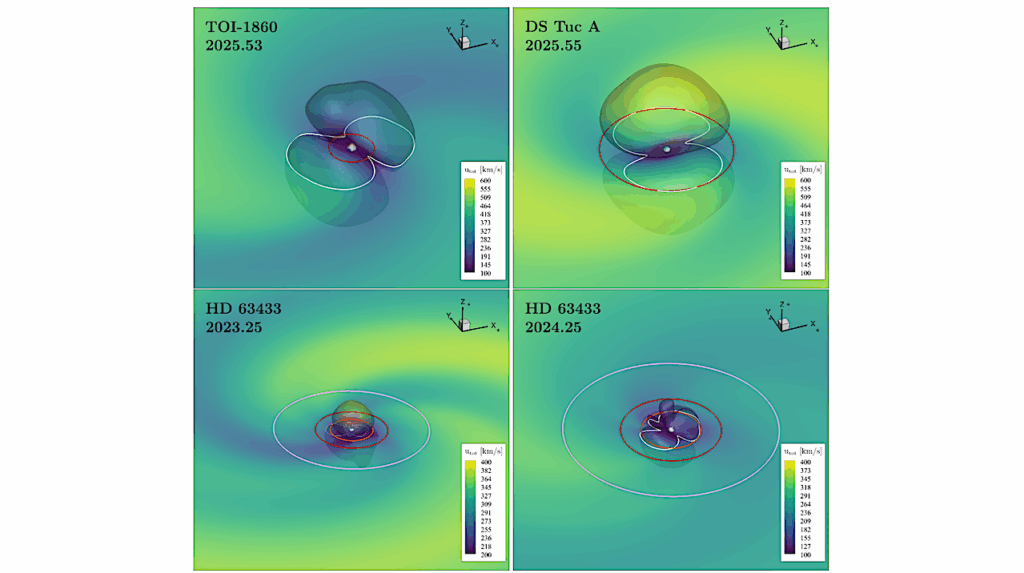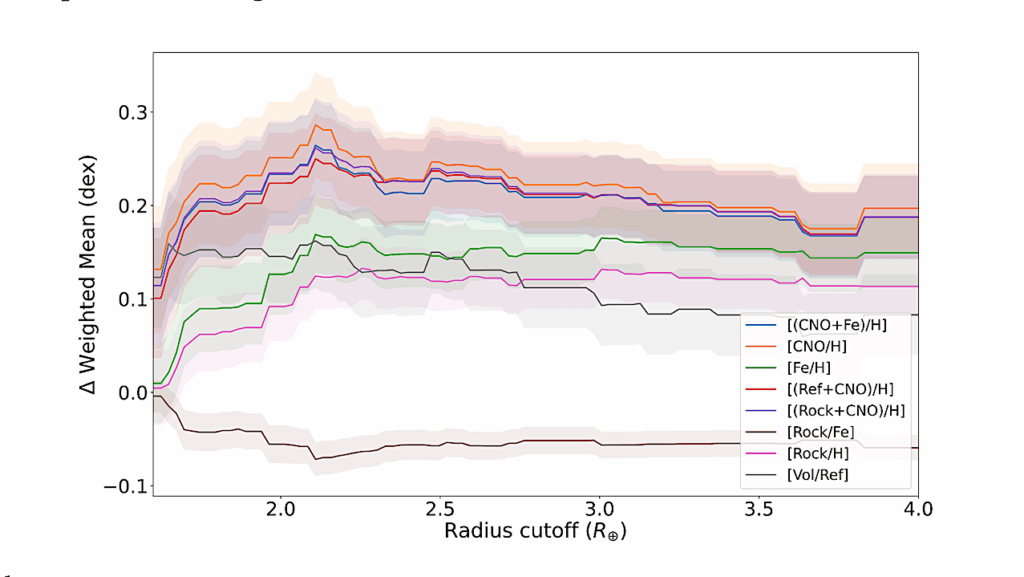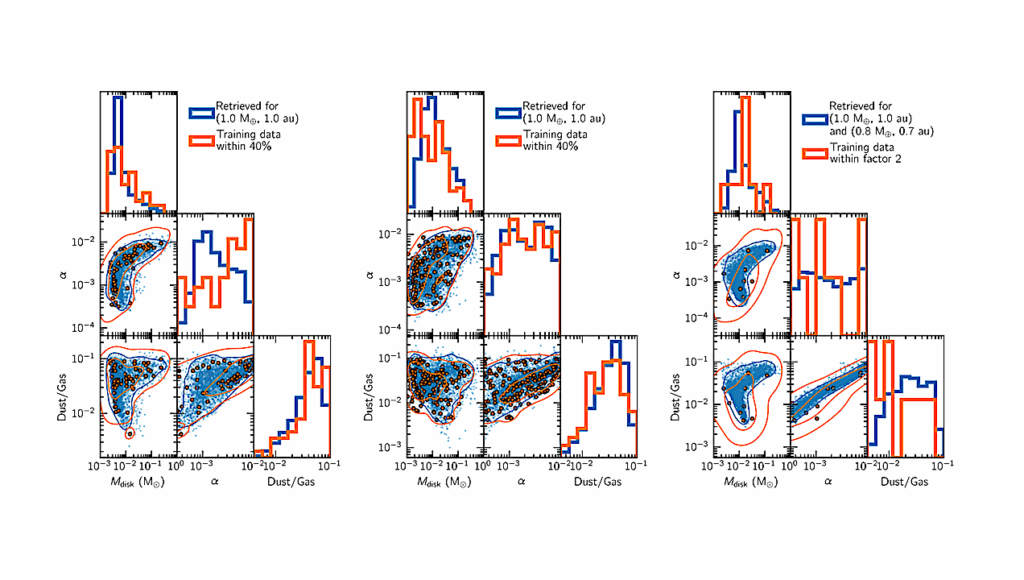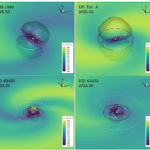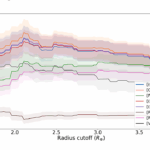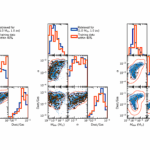Now Reading: Unraveling The Non-equilibrium Chemistry Of The Temperate Sub-Neptune K2-18 b
-
01
Unraveling The Non-equilibrium Chemistry Of The Temperate Sub-Neptune K2-18 b
Unraveling The Non-equilibrium Chemistry Of The Temperate Sub-Neptune K2-18 b
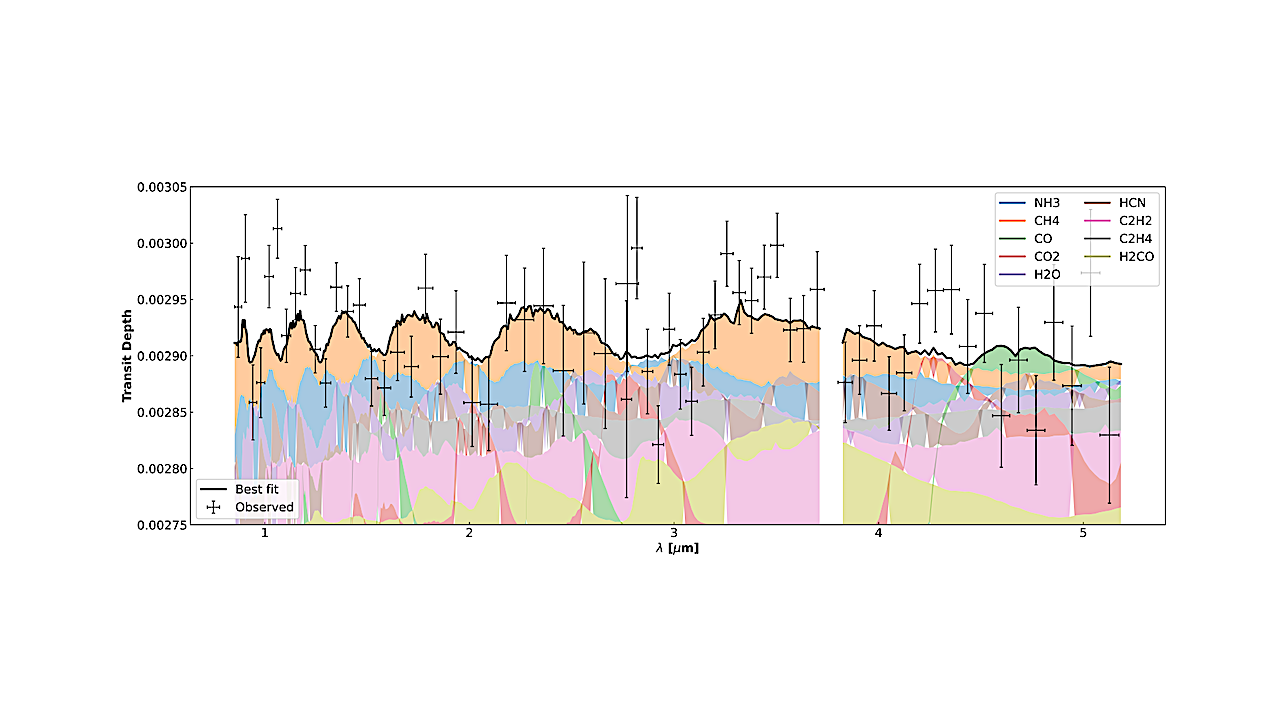

Transit spectra of the best fit non-equilibrium 1D model at resolution 200 (black solid line). This is the approximate best fit on the simulated grid of metallicity, C/O and Kzz. Values are respectively 280.7, 90.0 and 106 cm2 .s−1 . It is compare to K2-18 b observation (Madhusudhan et al. 2023) low resolution representation with an offset of -41ppm between NIRISS and NIRSpec data. The contributions of considered molecules are represented with shaded colors. — astro-ph.EP
The search for habitable, Earth-like exoplanets faces major observational challenges due to their small size and faint signals.
M-dwarf stars offer a promising avenue to detect and study smaller planets, especially sub-Neptunes-among the most common exoplanet types. K2-18 b, a temperate sub-Neptune in an M-dwarf habitable zone, has been observed with HST and JWST, revealing an H2-rich atmosphere with CH4 and possible CO2.
Conflicting interpretations highlight the importance of non-equilibrium chemistry, which is critical for constraining atmospheric parameters like metallicity, C/O ratio, and vertical mixing (Kzz). This study explores the parameter space of metallicity, C/O ratio, and Kzz for K2-18 b using the non-equilibrium chemistry model FRECKLL and JWST data. We generated spectra from a 3D grid of models and compared them to observations to refine atmospheric constraints.
A fixed pressure-temperature profile was used to capture first-order chemical trends, acknowledging some uncertainties. Our best-fit model favors high metallicity (266^{+291}{-104} at 2 sigma) and high C/O ratio (C/O > 2.1 at 2 sigma). CH4 is robustly detected (log10[CH4] = -0.3^{+0.1}{-1.7} at 1 mbar), while CO2 remains uncertain due to spectral noise. Kzz has no clear impact on the fit and remains unconstrained.
Non-equilibrium models outperform flat spectra at > 4 sigma confidence, confirming atmospheric features. Minor species, such as H2O and NH3, may be present but are likely masked by dominant absorbers. Our results highlight the limits of constant-abundance retrievals.
The atmosphere has a high C/O ratio suggesting possible aerosol formation. Better constraints require higher-precision data. Future JWST NIRSpec G395H and ELT/ANDES observations will be critical for probing habitability and refining models.
A. Y. Jaziri, O. Sohier, O. Venot, N. Carrasco
Subjects: Earth and Planetary Astrophysics (astro-ph.EP)
Cite as: arXiv:2507.14983 [astro-ph.EP] (or arXiv:2507.14983v1 [astro-ph.EP] for this version)
https://doi.org/10.48550/arXiv.2507.14983
Focus to learn more
Submission history
From: Adam Yassin Jaziri
[v1] Sun, 20 Jul 2025 14:39:00 UTC (748 KB)
https://arxiv.org/abs/2507.14983
Astrobiology,
Stay Informed With the Latest & Most Important News
Previous Post
Next Post
-
 01From Polymerization-Enabled Folding and Assembly to Chemical Evolution: Key Processes for Emergence of Functional Polymers in the Origin of Life
01From Polymerization-Enabled Folding and Assembly to Chemical Evolution: Key Processes for Emergence of Functional Polymers in the Origin of Life -
 02Panasonic Leica Summilux DG 15mm f/1.7 ASPH review
02Panasonic Leica Summilux DG 15mm f/1.7 ASPH review -
 03Two Black Holes Observed Circling Each Other for the First Time
03Two Black Holes Observed Circling Each Other for the First Time -
 04How New NASA, India Earth Satellite NISAR Will See Earth
04How New NASA, India Earth Satellite NISAR Will See Earth -
 05And Thus Begins A New Year For Life On Earth
05And Thus Begins A New Year For Life On Earth -
 06Astronomy Activation Ambassadors: A New Era
06Astronomy Activation Ambassadors: A New Era -
07SpaceX launch surge helps set new global launch record in 2024












